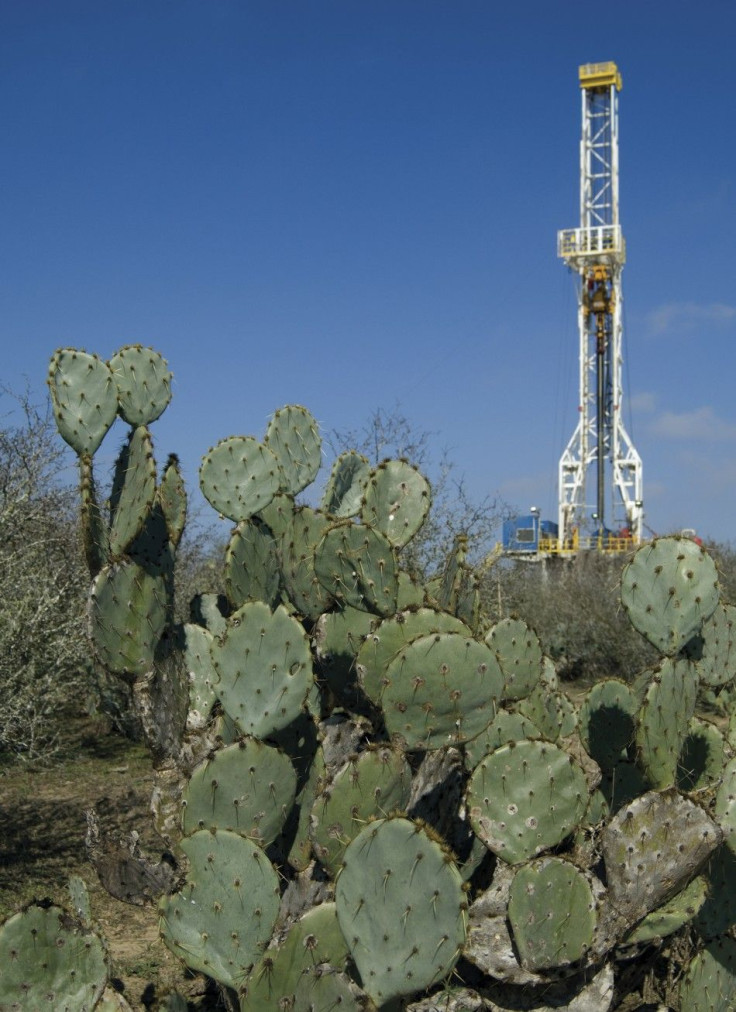Texas Town Rocked By Unusual Quakes Suspects Natural Gas Drilling

East Texas has been shaken this past week by two earthquakes, and the region's natural gas drilling could be what has triggered them.
Larry Burns, the emergency response coordinator for the city of Timpson, a small community tucked away in east Texas, said he will start drafting his town's first earthquake emergency response plan.
Timpson, a small community of just more than 1,000 residents, has been struck by two earthquakes in the past week, and five tremors since last summer.
It's a series of earthquakes in a part of the state that townspeople say is not known for being seismically active.
I've had people who've lived here all their lives who told me they've never experienced anything like this, said Burns, who has lived in Shelby County for the past 22 years. We have no idea, really. We are not accustomed to this at all.
On Thursday morning a 4.3 magnitude earthquake rocked Timpson residents out of their beds, causing some minor structural damage to older brick buildings in the town.
A week before, the town was hit by a 3.9 magnitude earthquake. The two quakes' epicenters were five to six miles apart, said Burns, who added the frequency with which the town has been hit is prompting some residents to question whether or not local gas drilling and saltwater waste injection wells are to blame.
I've been told it's a possibility, but a minute possibility, Burns said, who said the first earthquake struck within a mile and a half of a dry speculation well. He added he suspects injection wells, which call for the disposal of wastewater deep underground, are to blame.
Shelby County, in which Timpson is located, is one of the four core counties that comprise the Haynesville Shale formation in Texas.
As of Feb. 7, 2012, the county was home to 541 natural gas wells, according to data kept by the Texas Railroad Commission, the state's oil and natural gas regulator.
Timpson, Burns said, has seven to 10 saltwater waste injection wells within a 10-mile radius.
Ramona Nye, a spokeswoman for the commission, said as of Thursday, state regulators had no reason to suspect the natural gas industry had anything to do with the latest earthquake. She said regulators inspected the area of last week's earthquake and found nothing.
Commission staff last Friday also inspected three commercial disposal wells within the vicinity of last week's earthquake, Nye said. No Railroad Commission rule violations were found, and the wells were operating within their permit conditions. Re-inspections of these three commercial disposal wells were scheduled for [Thursday] along with inspections of other disposal wells in the vicinity of [Thursday's] earthquake.
In all Texas has 30,000 injection wells throughout the state, Nye said.
But Burns said former oilfield hands and workers living in the area are saying the industry, and the wastewater wells, are to blame. He is waiting to hear if the U.S. Geological Survey will loan the town a seismograph to keep track of the ground's movements.
Hydraulic fracturing wastewater wells have been linked to earthquakes throughout the country, and the U.S. Geological Survey noted magnitude 3 earthquakes increased in frequency in drilling areas from the 1970s to 2011.
Richard Ketcham, an associate professor at the Jackson School of Geosciences at the University of Texas at Austin, said injecting water back into the ground can alter rock formations and dynamics just enough to allow for rock movement where none was previously possible.
Pumping water into the ground is one of the most mechanically destructive things that we can do, Ketcham said, who added water acts as a lubricant allowing rocks to slide, build tension and release it in the form of a quake.
Ketcham said, however, that just because natural gas injection wells are present, does not automatically mean the wastewater is causing the quakes.
But for the state of Arkansas, that was enough of a possibility that state authorities there decided to take action. In 2011, state authorities voted to impose a moratorium on wastewater injection wells in a part of the state experiencing a rash of quakes, said Matt DeCample, spokesman for Arkansas Governor Mike Beebe.
Though the quakes and presence of injection wells were never fully linked, state officials looked at places in Ohio and England where similar quakes struck areas with waste wells, and considered the relationship as all too probable, said DeCample.
Roughly 730 disposal wells are active in the state, where close to 10,000 small quakes were recorded from one well alone, reported the Associated Press.
Since the moratorium, the number of quakes in Arkansas have dropped, DeCample said.
Don Blakeman, a geophysicist with the USGS Earthquake Information Center, said it is close to impossible to say with any certainty if an earthquake is man-induced or natural because the quake's shock waves are the same.
John Bellini, another geophysicist with the information center, said this past earthquake has been the third since the 1970s to hit the region. He said in 2011, the place was hit by a 2.2 magnitude quake, but that if quakes are below a 2.5, the USGS may or may not be aware of it, if townspeople do not call it in.
According to Bellini, there is a handful of seismic monitors spread throughout east Texas and Louisiana. He said the latest quakes are known to be on historically, but infrequently, active fault lines.
But residents of Timpson are concerned more quakes are on the way.
It sure doesn't seem normal, said Paula Mullins, the town's municipal court clerk.
© Copyright IBTimes 2024. All rights reserved.











